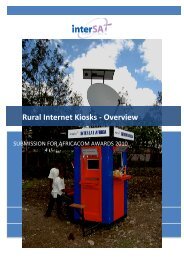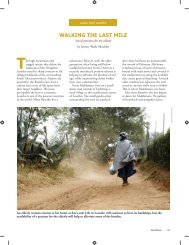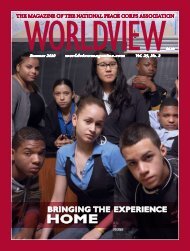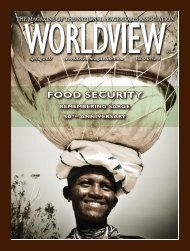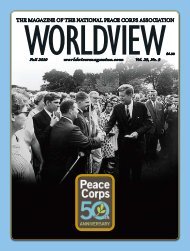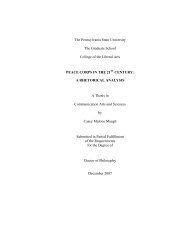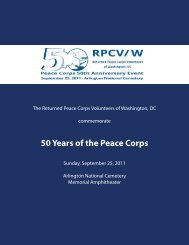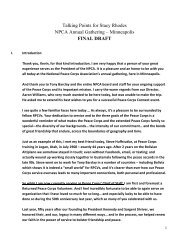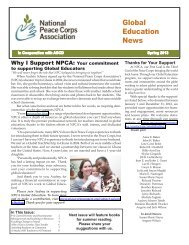Group Education Manual - Peace Corps Wiki
Group Education Manual - Peace Corps Wiki
Group Education Manual - Peace Corps Wiki
You also want an ePaper? Increase the reach of your titles
YUMPU automatically turns print PDFs into web optimized ePapers that Google loves.
8. Use the questions below to facilitate a discussion about the group’s reactions tothe results and the complexities of men’s and women’s vulnerability toHIV/AIDS:? To the volunteers: How did you feel representing these characters? How did youfeel when you received the test result? Was the result what you expected based onthe description of your character? If not, why not?? Are these men’s and women’s experiences common? Does anyone know of anysimilar situations?? What characteristics are often associated with these men and women?? What are some explanations for the different results these men and womenreceived?? Were men or women more vulnerable in the sexual situations discussed in thecase studies?? How could the men in the case studies have used their privilege and powerdifferently?? What kinds of factors (social, economic, political) make men and women morevulnerable to HIV infection?? How can men and women protect themselves from HIV?? Do couples generally talk about HIV/AIDS? Why or why not?? What factors might inhibit a man from talking to his partner about HIV/AIDS?What factors might inhibit a woman from talking to her partner aboutHIV/AIDS?? What support do couples need to protect themselves from STIs and HIV? Is thiskind of support available in the community?? What have you learned in this activity? Have you learned anything that could beapplied to your own life and relationships?ClosingMen’s and women’s vulnerability to HIV/AIDS is largely determined by gendernorms about sexuality. It is often assumed that “real men” have lots of sexualrelations and that women should be coy and passive in sexual matters. As a result,women might not always have the power and/or skills to communicate and negotiatesexual behaviors and methods of prevention. Other factors, such as poverty, make iteven less likely that men and women will be able to negotiate protection or evenaccess important health information and services. Promoting women’s rights to befree from discrimination, coercion, and violence is an important step towardreducing vulnerability to HIV/AIDS. It is just as important to involve men indiscussions about the role of negative gender norms and encourage them to discussHIV/AIDS prevention with their partners.47




